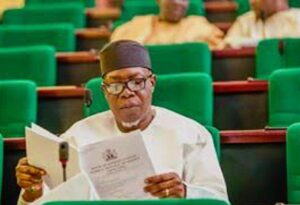Enugu, Abia, Models For Good Governance -BudgIT

Otti-Mbah
By Reporter
Enugu State and Abia State are among Nigeria’s most financially stable state in Nigeria, according to BudgiT and has assumed the model of good governance, just as Enugu has overtaken Lagos to become Nigeria’s most financially self-sufficient state. The latest rankings is contained in BudgIT’s 2025 State of States report.
The report ranked Enugu as the most fiscally viable subnational government in the country, capable of funding its recurrent expenditure from internally generated revenue (IGR) without relying on monthly allocations from the Federation Account Allocation Committee (FAAC).
Abia State on the other hand, generated enough IGR to cover at least 50 percent of the state’s operating expenses.
Enugu recorded a fiscal independence score of 0.68, meaning that 68 percent of its IGR could cover its operating expenses. Lagos came second with a score of 0.83, while Abia, Anambra, and Kwara completed the top five with scores of 1.56, 1.66, and 1.73 respectively.
At the bottom of the ranking were Yobe, Benue, Jigawa, Kogi, and Imo, identified as the least financially viable states due to their heavy dependence on federal allocations.
BudgIT explained that states ranking higher on the fiscal independence index demonstrate stronger financial autonomy and could theoretically operate independently with minimal external support.
The 2025 report marks a major turnaround for Enugu, which did not feature among the top five in 2024. Then, Rivers, Lagos, Ogun, Anambra, and Cross River led the rankings.
Economist have cited fiscal reforms and responsibility, and improved revenue management under Governor Alex Otti for the success recorded by the industrial state. BudgIT data also showed that Abia’s capital expenditure in 2025, reflects a marked shift when recurrent outweighed expenditure on capital outlays.
The report also showed that fewer states now generate enough internally to fund their recurrent expenditures compared to 2024.
Despite these gains, BudgIT noted that 28 states still rely heavily on FAAC allocations and other external inflows to meet their financial obligations.









